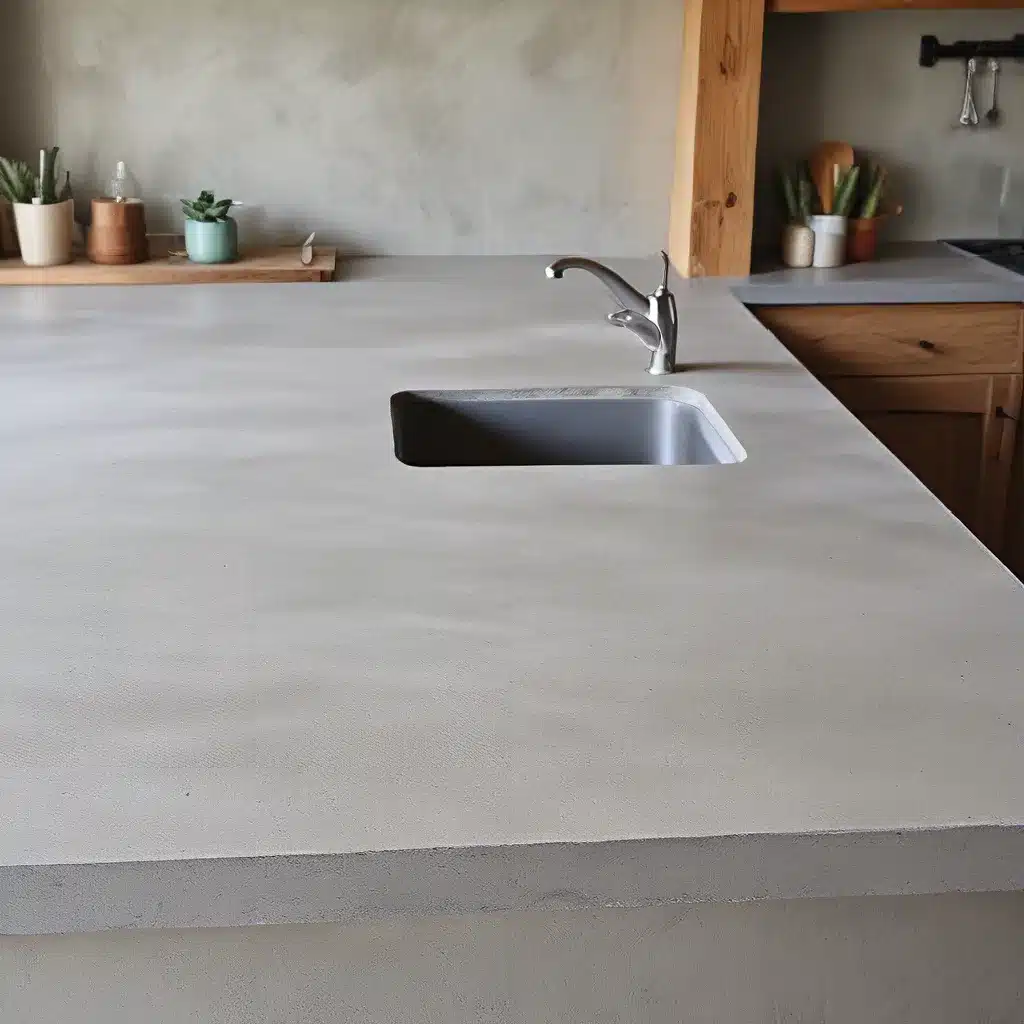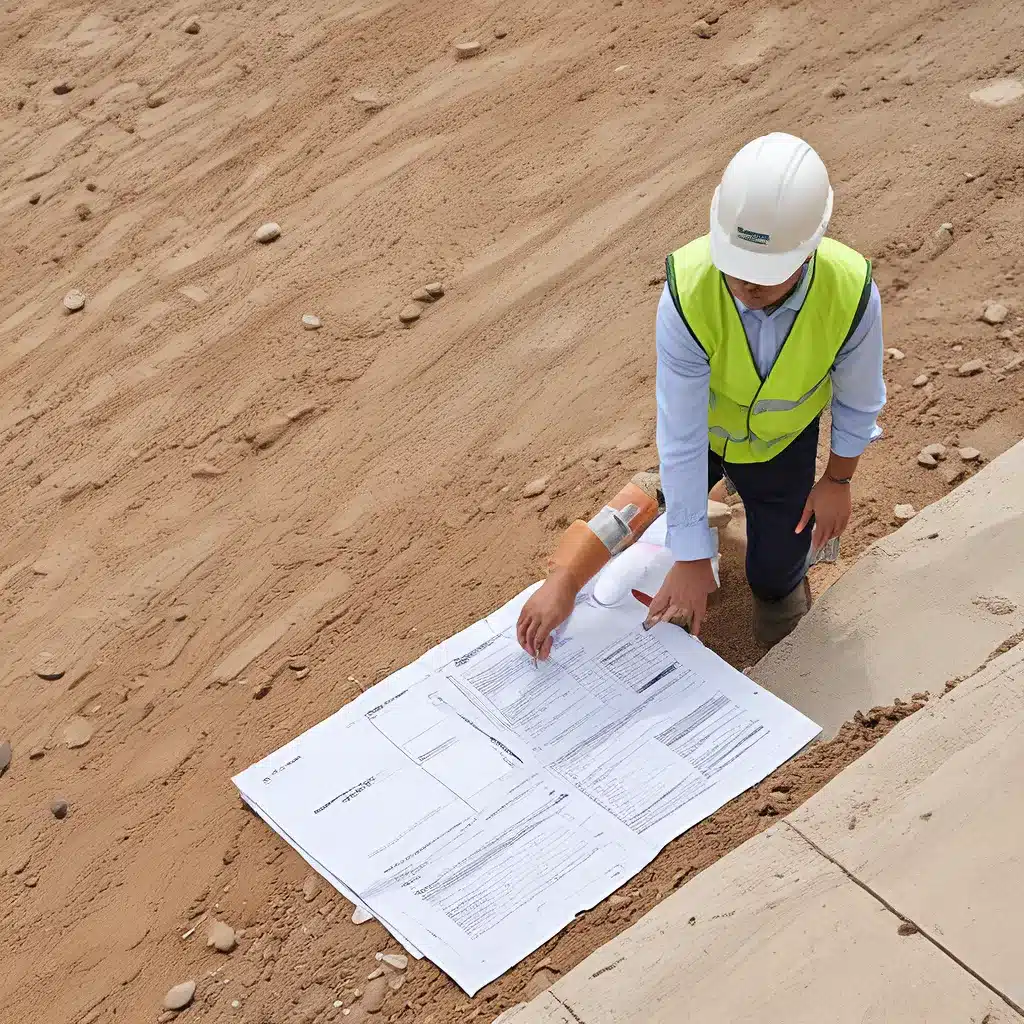
Introduction: The Concrete Countertop Craze
Concrete countertops – they’re the talk of the town, popping up in kitchens, bathrooms and beyond. If you’re anything like me, you’ve been eyeing those chic, industrial-inspired slabs and dreaming of incorporating them into your own home. Well, dream no more, my friends! Today, I’m going to walk you through the process of creating your very own DIY concrete countertops, right in the comfort of your own home.
Now, I know what you’re thinking – concrete? Isn’t that heavy, complicated, and messy? Well, yes and no. With the right tools, materials and a little bit of elbow grease, crafting your own concrete countertops is actually quite doable, even for the most novice DIYer. And the best part? You’ll end up with a one-of-a-kind, custom countertop that will have your friends and family utterly impressed.
Assessing Your Needs: What Type of Home Studio Do You Want?
Before we dive into the nitty-gritty of mixing and pouring, it’s important to take a step back and really think about the type of home studio you want to create. After all, the specific gear, setup and workflow you choose will depend heavily on your intended use.
Are you looking to build a dedicated tracking studio to send your recordings off to a professional mix engineer? Or perhaps you aspire to become a mix engineer yourself, in which case you’ll need a space tailored for critical listening and detailed adjustments. Maybe you’re more of a beat-maker or electronic music producer, in which case your needs will be quite different.
Regardless of your goals, the key is to start with the end in mind. Envision how you want your studio to function, and let that guide your decisions moving forward. Do you need multiple inputs for recording a full band? Extensive monitor control capabilities? Impeccable acoustics for mixing? Jot down your priorities, and use that as a roadmap as we dive deeper into the equipment and setup.
Mastering the Fundamentals: Soundproofing and Acoustics
Now, before we even think about gear, there’s one crucial element that too many home studio owners overlook: soundproofing and acoustics. Trust me, I’ve seen it time and time again – folks loading up their space with top-of-the-line mics, interfaces and speakers, only to have the whole setup undone by a room with abysmal acoustics.
You see, even the most pristine audio equipment is only as good as the environment it’s operating in. That’s why getting the room right should be your top priority. Start by sealing up any air gaps and weak points that could let outside noise seep in. Windows, doors, and even air vents can all act as sonic portals, so be sure to address those thoroughly.
But it’s not just about keeping external sounds out; you also need to tame the reflections and reverberations within your space. Acoustic panels strategically placed around the room will be your new best friend, absorbing unwanted echoes and creating a neutral, controlled environment perfect for recording and mixing.
Now, I know what you’re thinking – this all sounds like a huge hassle. But trust me, invest the time and effort upfront, and you’ll be rewarded with a studio that performs at its absolute best, no matter what gear you end up using. It’s the foundation upon which everything else is built.
Choosing the Right Gear: Navigating the Endless Options
Alright, now that we’ve got the acoustics sorted, let’s talk gear. This is where things can really start to feel overwhelming, with an endless array of mics, interfaces, monitors and more to sift through. But fear not, I’m here to help you cut through the clutter and identify the essentials.
The heart of any home studio is the audio interface – this is what’s going to convert your analog signals to digital, and vice versa. When it comes to interfaces, you generally get what you pay for, so it’s worth investing in a quality unit with clean, transparent conversion and low latency. Brands like Universal Audio, Apogee and Audient consistently deliver excellent performance in this department.
Next up, let’s talk mics. Now, this is an area where personal preference and application really come into play. Do you need something versatile that can handle vocals, instruments and more? The Slate VMS ML-1 is a fantastic all-rounder, with software emulations that allow you to tailor the sound to your liking. Or perhaps you’re after a specific sonic character – in which case, getting to know your local music shop and demo-ing different mics is key.
And of course, we can’t forget about the speakers. These are your window to the world, so you’ll want something that’s accurate, revealing and able to translate your mixes to the real world. The Adam A7X and Yamaha HS8 are two of the most trusted names in the game, offering excellent balance and clarity. Just be sure to pair them with proper acoustic treatment to get the most out of them.
The list goes on – preamps, compressors, DAWs, and beyond. But the moral of the story is this: focus on quality over quantity, and invest in the essentials that will truly elevate your studio’s performance. It’s not about having the most gear, it’s about having the right gear.
Workflow and Creativity: Crafting the Ideal Studio Environment
Now that we’ve covered the technical side of things, let’s talk about the all-important creative aspect of building your home studio. After all, what good is a perfectly calibrated, acoustically-treated space if it doesn’t inspire you to make music?
This is where the fun really begins. Start by thinking about the vibe and aesthetic you want to cultivate. Maybe you’re going for an industrial-chic look with exposed brick and concrete, or perhaps you prefer a more cozy, homey feel. Incorporate elements that speak to your personal style and creativity – think funky lighting, lush plants, or even a killer vintage gear collection on display.
But it’s not just about the visuals. Pay attention to the ergonomics of your setup too. Ensure your desk, chair and monitor positioning are optimized for comfort and efficiency, so you can spend hours in the studio without fatigue or strain. And don’t forget about the all-important listening position – that sweet spot where your speakers and acoustics come together in perfect harmony.
Finally, don’t be afraid to experiment and get a little messy. After all, the home studio is your domain, your creative playground. Tinker with cable routing, try out different monitor placements, or even build your own custom furniture. The more you engage with the space, the more it will start to feel like an extension of your creative self.
Conclusion: Embrace the Journey, Master the Concrete Countertop
There you have it, folks – the roadmap to crafting your very own DIY concrete countertops, and building the home studio of your dreams in the process. Remember, the key is to approach this journey with an open mind, a healthy dose of patience, and a willingness to get your hands a little dirty.
After all, mastering concrete countertops is just the beginning. Once you’ve conquered that, who knows what other ambitious projects you’ll tackle next? Maybe you’ll even decide to take your studio skills to the next level and start mixing for others. The possibilities are endless, my friends.
So, what are you waiting for? Grab your apron, fire up that concrete mixer, and let’s get to work! With the right preparation and a little elbow grease, you’ll be well on your way to a one-of-a-kind countertop that will be the envy of all your friends. And who knows, maybe it’ll even inspire you to take your home studio to new creative heights. The journey begins now!
Related posts:
No related posts.




